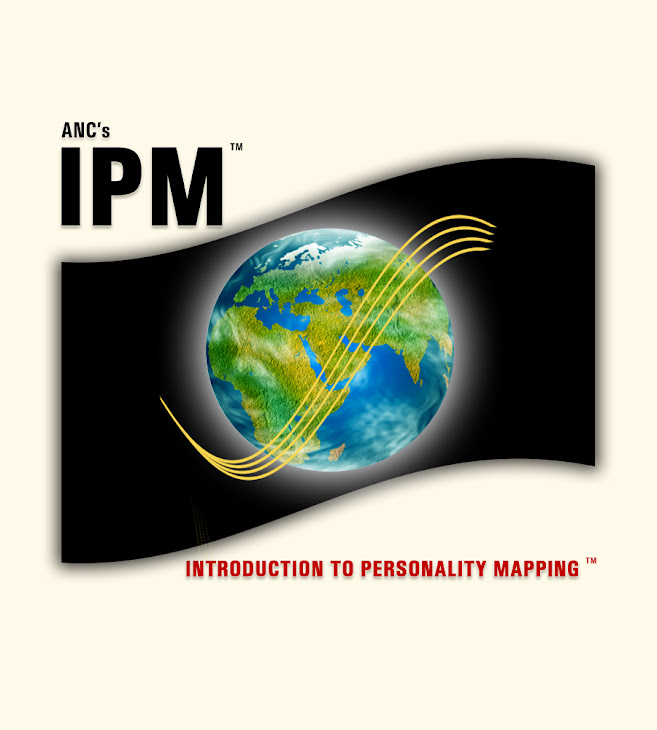Amar Nath Chatterjee
Jungian Approach and MBTI
June 2008
A Quick Recap of the Jungian Approach to Personality Measurement
and Myers Briggs Type Indicators
Amar Nath Chatterjee (ANC)
Corporate Trainer and Management Consultant (Personality Mapping)
Principal Consultant (retired) - Tata Consultancy Services,
Doctoral Scholar (OB Area), XLRI Jamshedpur
Abstract: This paper focuses on the Jungian approach to the concept of Personality
leading to the development of Myers Briggs Type Indicators (MBTI). Though not free from
limitations and criticisms, MBTI remains one of the most popular and widely used
personality inventories worldwide, adopted by the CAPT, USA and is still evolving.
Keywords: Personality, MBTI
Introduction and Background:
Personality implies predictability about how a person will act under different
circumstances or react to different stimuli. Based on review of literature, a few of the
important personality theories are discussed below. Authentic literature on MBTI was
referred to (Jung, Adler and Hull, 1921/1976; Myers and Myers, 1980 & Myers and
McCaulley, 1985). The review included an analysis of occupation-wise data from the
MBTI data bank compiled from the sampled response sheets scored in the 1970’s until
1984 (Appendix D in Myers & McCaulley, 1985).
There have been numerous proponents of personality theories- Machiavelli (1512-27
AD), Adler (1870 AD), Freud (1856-1902 AD), Erikson (1902-63 AD), Bandura (1965
AD), Jung (1875-1961 AD), Skinner and the list could go on to include a more recent and
comprehensive “Big-5” model proposed by Paul Costa and Robert Mc Crae of National
Institute of Health and by Warren Norman of University of Michigan and Lewis Goldberg of University of Oregon. Approaches of each of these theorists were original and distinct from one another, emphasizing different aspects of personality and having divergent views
about its organisation, development, and manifestation in external behavior.
The Jungian Approach:
The Jungian theory suggests that individuals differ in how they acquire data from the world around them and how they subsequently make judgments using this data (Cowan, 1989).
Jung’s theory is a typology derived from innate preferences regarding how humans receive and process information (Neubauer, 2004). The essence of Jung’s theory is the belief that there are four basic mental functions used by everyone in varying degrees, which he identified as Sensing (S), iNtuition (N), Thinking (T) and Feeling (F), and none of which can be related or reduced to one another” (Myers & McCaulley, 1985). He further classified sensing and intuition as “irrational” perceptive activities and thinking and feeling
as “rational” judging activities. Jung also considered Extraversion (E) and Introversion (I) as complimentary attitudes or orientations toward life. Extroverted people seem to be drawn outward towards the objects and people in the environment while the introverted people are drawn inward. Thus he theorised three bipolar dimensions - extroversion-
introversion (E-I), sensing-intuition (S-N), and thinking-feeling (T-F).
The MBTI:
As a psychometric instrument, MBTI was constructed by Isabel Myers and her mother Katherine Cook Briggs in the Post-WW II era. It is a tool that can be grasped and understood in a relatively short time to give a better understanding of people and their differences. The instrument has also been tested extensively for reliability and validity (Myers & McCaulley, 1985). Historical milestones of MBTI are highlighted in Table-1.
Table-1:
MBTI: Historical Milestones since 1920. Year
MBTI: Historical Milestones
1920
Carl Jung publishes his intuitively conceived theory of psychological types.
1923
Peter Baynes, Jung’s disciple, publishes the English translation.
Post-WW II
Katherine Briggs and Isabel Myers design MBTI.
1956
Educational Testing Service agrees to publish MBTI.
1962
Isabel Myers publishes the first edition of the MBTI manual.
1962
Isabel Myers is invited to speak to the American Psychological Association (APA).
1969
Isabel Myers meets Mary McCaulley, and starts the typology lab at Univ. of Florida.
1972
The typology lab becomes Centre for Application of Psychological Types (CAPT).
1975
CAPT sponsors the first biennial conference on type-watching.
1985
Mary McCaulley publishes the second edition of the MBTI manual
Post-Y2K
Revised MBTI Personality Inventory Form ‘M’ introduced (with 93 questions)
Source: Myers & McCaulley (1985), and telephonic inputs from Dr. J. M. Ojha, Manasayan, Delhi. Jung’s theory covered three preferential dimensions, E-I, S-N and T-F. Though the importance of a fourth dimension, namely, that of the two kinds of lifestyle preferences- judging and perceiving (J-P), were implicit in Jung’s work, it was Myers and Briggs, who defined them explicitly while developing MBTI framework (Myers & McCaulley, 1985). Thus MBTI, in its present form, has four bipolar dimensions, E-I, S-N, T-F and J-P,
leading to sixteen personality “Types”, as shown below (Fig.1).
Figure-1
I
E
S
N
Explorer
Preserver
Driver
Administrator
INTJ 1%
INTP 1%
ENTP 5%
ENTJ 5%
INFJ 1%
INFP 1%
ENFP 5%
ENFJ 5%
ISFJ 6%
ISFP 5%
ESFP 13%
ESFJ 13%
ISTJ 6%
ISTP 6%
ESTP 13%
ESTJ 13%
An individual’s psychological type is the result of combination of preferences, which, for convenience, can be abbreviated by using the applicable four letters. For example, ISTJ would mean an Introvert with preferences for Sensing and Thinking, and with a mainly Judging attitude toward the world (Bostrom & Kaiser, 1981). Gardner and Martinko (1996) concluded from their review on the usage of MBTI instrument, that the instrument is a
reasonably reliable and valid tool for research into relationships among managerial personalities, cognition, behaviors, effectiveness, and situational variables.
Table-2 below compiled from the occupation-wise data provided by Myers & McCaulley (1985) shows the 16 MBTI types and their intrinsic career propensity at a glance, compiled from the MBTI manual by Myers & McCaulley (1985). It may be observed that 72% of people taking the MBTI tests showed extraversion and the overall tested population are almost equally divided between the ‘J’ and the ‘P’ types.
Table-2: The 16 Types at a glance
Sr. No. MBTI Type Figurative Typ
Percentage among th
Tested Population
1
INTJ
Scientist
1%
2
INFJ
Author
1%
3
ISFJ
Server
6%
4
ISTJ
Trustee
6%
5
INTP
Architect
1%
6
INFP
Questor
1%
7
ISFP
Human
6%
8
ISTP
Artisan
6%
9
ESTP
Promoter
13%
10
ESFP
Entertainer
13%
11
ENFP
Journalist
5%
12
ENTP
Inventor
5%
13
ENTJ
Field Marshall
5%
14
ENFJ
Pedagogue
5%
15
ESFJ
Seller
13%
16
ESTJ
Administrator
13%
Conclusion:
Moore (1987), as cited by Cowan (1989, p.1), had observed, “In 1986 some 1.5 million people took the MBTI, according to its publisher, Consulting Psychologists Press in Palo Alto, California. It is almost certainly the most widely used personality test in the U.S. . . and the test whose use is growing fastest. . . .The corporate world is by far the biggest user, and business accounted for 40% of test sales last year, double their share of
three years ago. . . . Most companies use the Myers-Briggs type Indicator primarily in management development programs, to help executives better understand how they come across to others who may see things differently. (p.74)”.
To sum up, though the use of the Jungian theory for the assessment of the personality is not free from criticism and the dichotomous interpretation that Myers and Briggs made of Jungian theory may have unduly restricted its sensitivity thus making it prone to losing important information (Ramaprasad & Mitroff, 1984), Myers and Briggs Type Indicator (MBTI) Framework has survived the test of time through many decades and this much-
debated instrument, accepted by the Centre for Analysis for Psycho Types (CAPT), USA right from its infancy, has always fascinated researchers studying personality traits of the individuals (Lampe, 2004), mainly due to its simplicity of concepts and ease of use.
References
Bostrom, Robert P. & Kaiser, Kate M. (1981). Personality differences within systems project teams: implications for designing solving centers. {Proceedings of The Eighteenth Annual Computer Personnel Research Conference}, ACM Press, 248-85. Cowan, David A. (1989). An alternative to the dichotomous interpretation of Jung’s psychological functions: Developing more sensitive measurement technology.
Journal of Personality Assessment, 53(3), 459-471.
Gardner, W.L., & Martinko, M. J. (1996). Using the Myers–Briggs Type Indicator to study managers: a literature review and research agenda. Journal of Management, Vol. 22, Issue 1, 45-83.
Jung, C. G., Adler, G. & Hull, R. F. C. (1976). Collected Works of C.G. Jung, Volume 6:
Psychological Types (Paperback). Princeton: Princeton University Press.
Jung, D. I. & Avolio, B. J. (2000). Opening the black box: An experimental investigation of the mediating effects of trust and value congruence on transformational and transactional leadership. Journal of Organizational Behavior, 21, 949-964.
Lampe, James, C. (2004). Alternative Personality Measurements. Journal of Information Systems, 18 (1). Moore, T. (1987). Personality tests are back, Fortune (March 30), 76-81. Myers, Briggs I & Myers, P. (1980). Gifts differing: Understanding personality type, CA: Davies Black Publishing.
Myers, I.B., & McCaulley, M.H. (1985). Manual: A guide to the development and use of the Myers-Briggs Indicator. Palo Alto, CA: Consulting Psychologists Press. Neubauer, Bruce J. (2004). Designing artificial personalities using Jungian theory. Journal of Computing Sciences in Colleges, 20 (1), 297-305.
Ramaprasad, A. & Mitroff, I. (1984). On formulating strategic problems. Academy of Management Review, 9, 597-605.
****************
Subscribe to:
Post Comments (Atom)


No comments:
Post a Comment